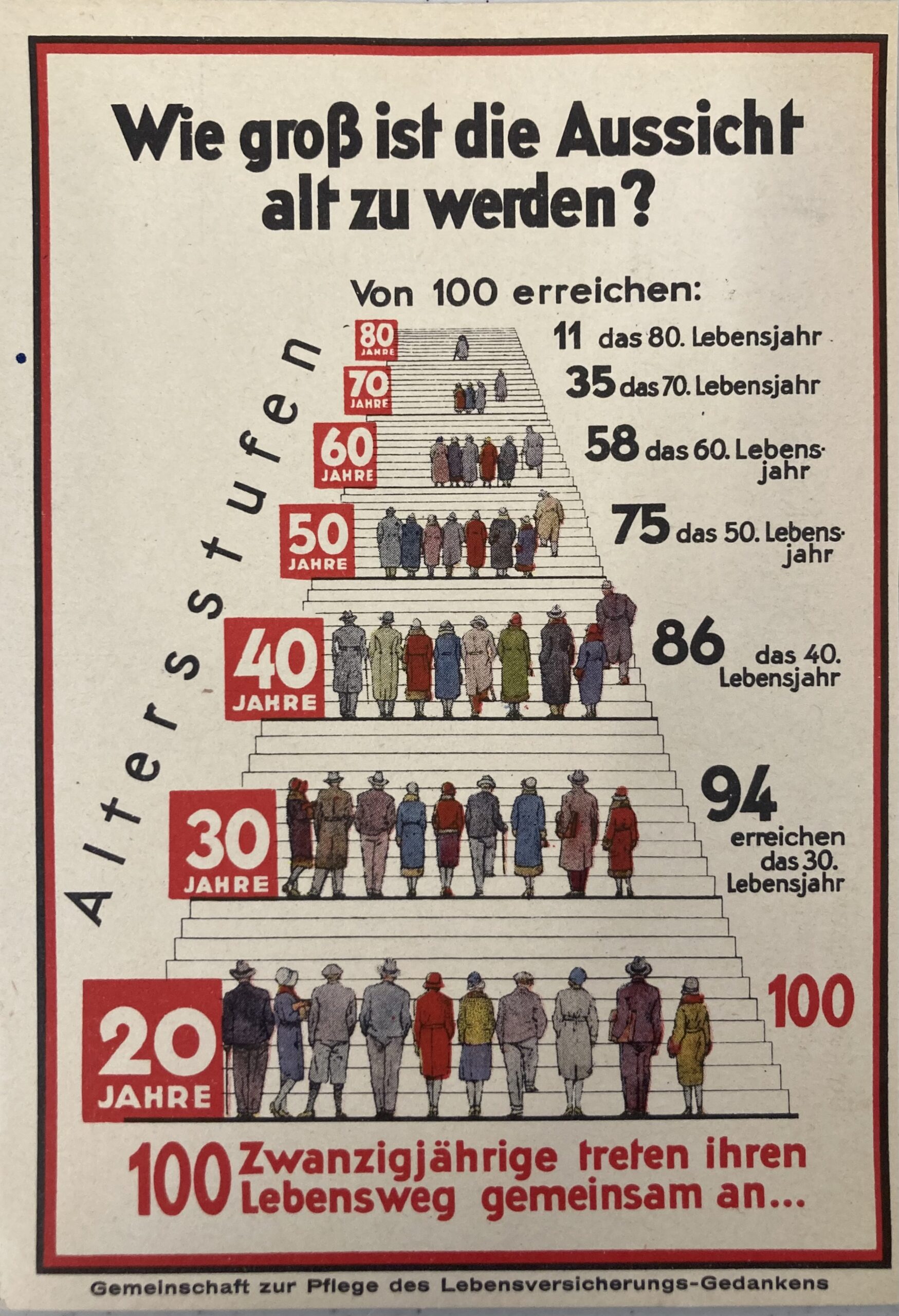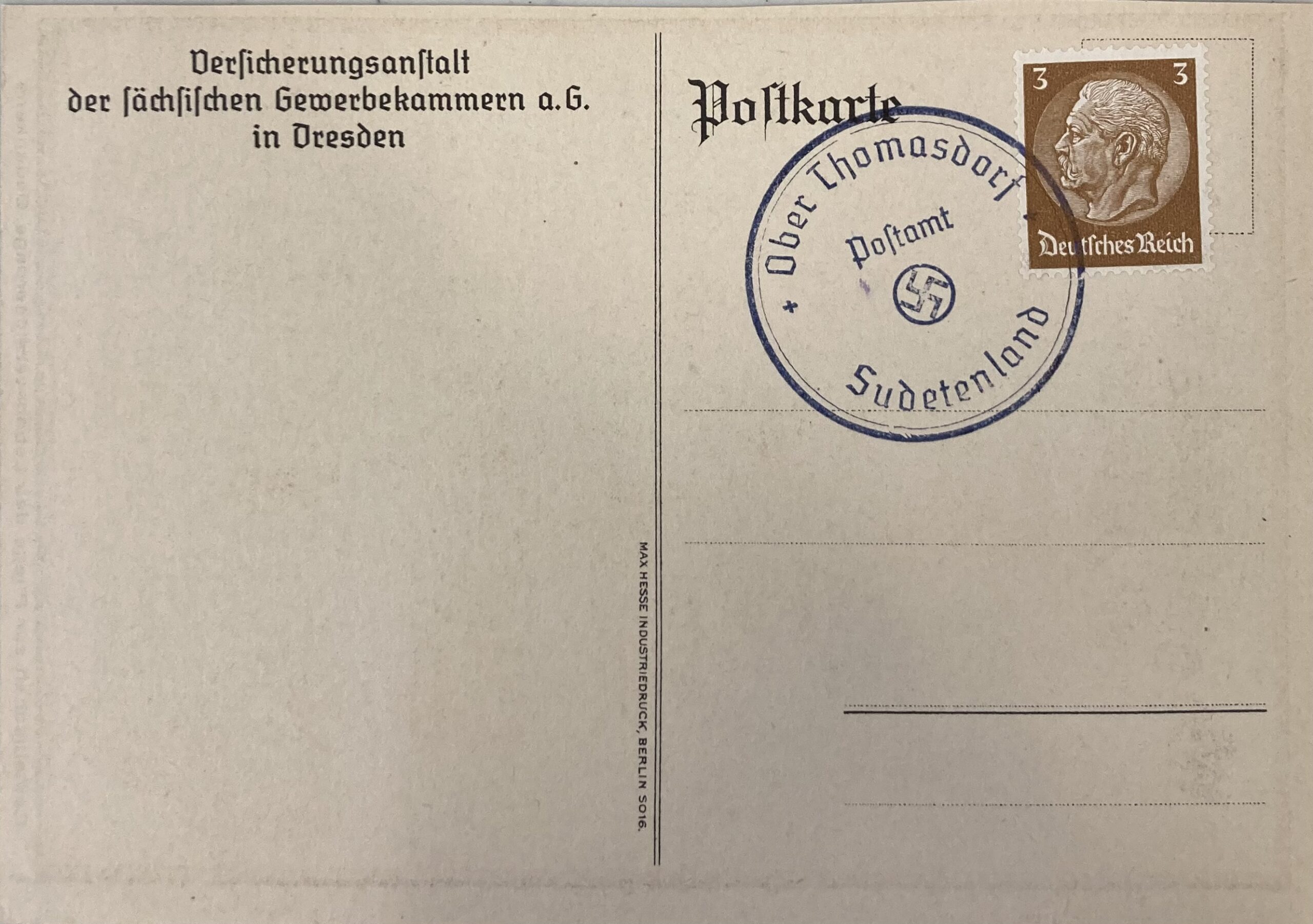Accession Number: 2022.02.14.36
Stamp: Paul von Hindenburg, the second German President. Medallion set dates December 1933 and February 1936.
Postmark: From the post office of Upper Thomasdorf, Sudetenland
Historical background: The social policies of eugenics in Nazi Germany were composed of various ideas about genetics. The racial ideology of Nazism placed the biological improvement of the German people by selective breeding of “Nordic” or “Aryan” traits at its center. These policies were used to justify the involuntary sterilization and mass-murder of those deemed “undesirable”. Eugenicists had three primary objectives. First, they sought to discover “hereditary” traits that contributed to societal ills. Second, they aimed to develop biological solutions to these problems. Finally, eugenicists sought to campaign for public health measures to combat them. This postcard come from the community to cultivate the life insurance idea to encourage Germans to take care of their health in order to live to 100 because “How great is the prospect of growing old?”


